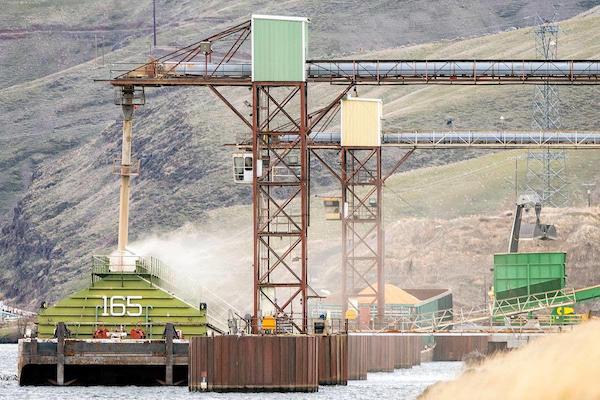forum
library
tutorial
contact

Bryan Smith Perpetuates Myths
About Lower Snake River Dams
by John R. Snyder, Ph.D.
Post Register, April 25, 2021
|
the film forum library tutorial contact |

|
Bryan Smith Perpetuates Myths
by John R. Snyder, Ph.D.
|
 Political decisions based on myths are dangerous. Bryan Smith's myths about the Lower Snake River dams cannot go unchallenged. The Lower Snake River dams are valuable to the Northwest. But Idaho's share of that value is millions of dollars, not the billions claimed by Smith.
Political decisions based on myths are dangerous. Bryan Smith's myths about the Lower Snake River dams cannot go unchallenged. The Lower Snake River dams are valuable to the Northwest. But Idaho's share of that value is millions of dollars, not the billions claimed by Smith.
The Lower Snake River dams are valuable to Lewiston and regional Idaho businesses that depend on export markets served by the Port of Lewiston. But beyond the Port of Lewiston, the value of the Lower Snake River dams to Idaho is more mythical than reality.
For example, Idaho will lose "cheap hydroelectricity produced by the dams." While real, this threat is trivial compared to the threat to Idaho if Bonneville Power Association cannot control their escalating costs.
Why trivial? Because the four Snake River dams supply 12% of the average energy production of the entire Federal Columbia River Power System and 5% of the Pacific Northwest production. Are higher costs for 5% of our electricity from Bonneville Power Association really a threat to Idaho?
BPA faces cost pressure from maintaining aging generation infrastructure, increasing cost to meet fish and wildlife obligations, the cost of the Residential Exchange Program settlement and flat-to-declining firm power sales. If BPA cannot control these costs, it may not be able to negotiate and offer new long-term wholesale power contracts after Sept. 30, 2028, when current contracts expire. If that happens, Idaho citizens will pay a higher cost for all of BPA's share of our power, not just 5%.
Would breaching the Lower Snake River dams to Idaho actually result in a loss of recreational opportunities and a threatened quality of life for Idaho citizens (Idaho Senate Joint Memorandum 103)? Before the dams were built, the Department of Interior stated that the salmon and steelhead runs on the lower Snake River "would have to be sacrificed if there was no other way to produce the needed electricity." A U.S. Army Corps of Engineers 1971 Environmental Impact Statement for the Lower Granite Dam stated, "steelhead fishing and spawning ground must be considered eliminated." Recreational opportunities and quality of life in central Idaho have already been, and continue to be, negatively impacted by the Lower Snake River dams.
If we ask businesses in central Idaho: "As sure as salmon bring life to Idaho rivers, they bring life to North Central Idaho. Middle Fork Outfitters Association members and our guests provide $22 million in direct economic impact each year into these communities. If we could restore the salmon and steelhead runs, it would lead to huge economic development in rural communities from eastern Washington, northcentral Idaho and to communities like Riggins, Salmon, Challis and Stanley."
Will breaching the Lower Snake River dams restore salmon and steelhead runs in Idaho? Building them devastated native salmon and steelhead runs as predicted. Expensive artificial propagation has not made up for the losses. Removing the dams will impact spawning grounds in Washington, but not Idaho. Two models predict that without the dams more adult fish will reach Idaho.
Yes, the Port of Lewiston is valuable to Idaho. But will Idaho really lose low-cost shipping for billions of dollars worth of products to West Coast seaports?
The major export product from Port of Lewiston is grains. The major product is wheat, produced primarily in the surrounding regions of Washington and Idaho — about 22 million bushels per year. The Lewis-Clark Terminal in Lewiston exported over 24 million bushels of wheat in 2013-2014, which was the largest crop handled to date by Lewis-Clark Terminal. The value of that export was $165 million, not billions.
Pulse crops, e.g., lentils, were another major Port of Lewiston product. Idaho is fourth in the nation in dry pea and lentil production. A labor dispute at the Port of Portland ended container-on-barge service to Port of Lewiston in 2015. Loss of that service forced pulse farmers to ship by rail and truck. And "if rail transportation were built out further ... farmers ... might be able to abandon barge shipping altogether."
Times have changed. The low-cost, carbon-free hydropower can be replaced. And the COVID-19 economic recovery funding can provide the costs to make Washington and Idaho stakeholders dependent on the Lower Snake River dams whole in this transition.
It is time to act on Rep. Simpson's Northwest in Transition proposal based on facts, not myths. A word to the wise in passing, to get facts, seek sources more credible than the Idaho Legislature and in-house lawyers for the Bonneville County Republican Central Committee.
learn more on topics covered in the film
see the video
read the script
learn the songs
discussion forum
